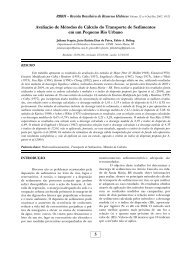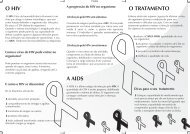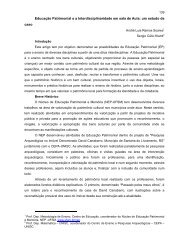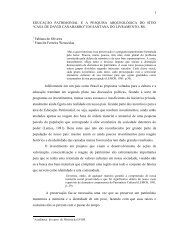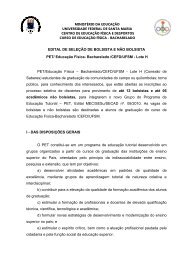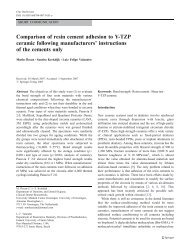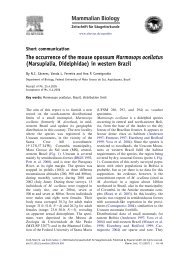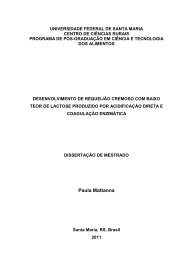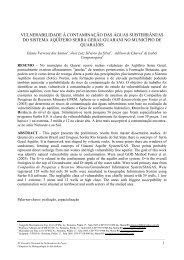Taísa Ceratti Treptow - UFSM
Taísa Ceratti Treptow - UFSM
Taísa Ceratti Treptow - UFSM
You also want an ePaper? Increase the reach of your titles
YUMPU automatically turns print PDFs into web optimized ePapers that Google loves.
ABSTRACT<br />
Master Dissertation<br />
Graduate Program on Food Science and Technology<br />
Federal University of Santa Maria<br />
RADIATION UV-C IN NIÁGARA WHITE, TREBBIANO, ISABELLA AND<br />
CABERNET SAUVIGNON<br />
AUTHOR: TAÍSA CERATTI TREPTOW<br />
ADVISER: CLÁUDIA KAEHLER SAUTTER<br />
Place and Date of Defense: Santa Maria, February 29 th , 2012.<br />
This study evaluated the UV-C irradiation in tissues of rachis with and without berries, and<br />
berries with stems of Vitis vinifera and Vitis labrusca. In berries of cv. Isabella, the volatile<br />
compounds were analyzed on days 2, 5 and 10 of storage at 20 ºC and the effect of UV-C<br />
irradiation on the 5 th day of storage. The experiments were based on four treatments of UV-C<br />
radiation (0, 1, 2 and 3 kJ m -2 ) with four cv. (Niagara white, Trebbiano, Cabernet sauvignon<br />
and Isabella) and evaluation times (three in berries and four rachis). The rachis with and<br />
without berries and the berries with stems remained stored at 20 ºC to evaluate physiological<br />
parameters. Ethylene production rate, respiratory rate and total polyphenols were evaluated in<br />
all tissues. Only in the rachis was determined by weight loss on days 1, 3 and 5, reducing<br />
sugars, non-reducing sugars on the 5 th day. Berries and the juice from the cv. Isabella the 5 th<br />
day of storage at 20 °C the total soluble solids (TSS), titratable acidity (TA), anthocyanins,<br />
total phenols, sugars and the ratio (TSS/ TA) were measured. In berries of cv. Isabella on days<br />
2, 5 and 10 storage and berries irradiated with UV-C in amounts of 0, 1, 2 and 3 kJ m -2 ,<br />
volatiles were extracted by solid phase microextration. After desorption, the volatile<br />
compounds were separated by gas chromatography, identified by mass spectrometry and<br />
quantified by flame ionization detector. For the sensory analysis of the juice discriminatory<br />
tests for paired comparison of difference and test ranking were used. The physiological<br />
response of UV-C irradiation depends on the cv. and the irradiated tissue. Only the rachis of<br />
grape Vitis labrusca ‗Niagara white‘ behaves climateric during storage in post-harvest and<br />
may reduce the self life of table grapes. This study found a possible hormetic dose of 3 kJ m -2<br />
only for the cv. Isabella berry. 84 volatile compounds were detected over the days of storage.<br />
After 5 days storage, berries irradiated with UV-C 66 volatiles were found. And the dose of 3<br />
kJ m -2 increased the concentration of esters and aldehydes, and 43,8% increase in the total<br />
polyphenols in berry. In the paired comparison test of difference, the judges showed greater<br />
intensity in the aroma of the juice from grapes irradiated. In the ranking test, the judges were<br />
unable to discriminate between different doses of irradiation, though differing dose control (0<br />
kJ m -2 ) of the irradiated treatments. The analytical test enabled by gas chromatography to<br />
determine statistical differences between the different doses detected volatiles, especially at a<br />
dose of 3 kJ m -2 , in which panelists found no difference.<br />
Keywords: Vitis vinifera, Vitis labrusca, plant tissues, secondary metabolism, volatile<br />
compounds.<br />
7




